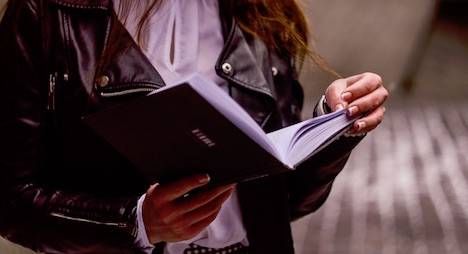
Riot Round Up: The Best Books We Read in March
Every month, we ask Riot contributors to share their favorite reads from the last 30 days. These picks are old and new and yet-to-be-released, and span all genres, so there’s something for everyone! Take a look:
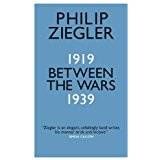
In a STRANGELY PRESCIENT book, Ziegler examines how the world went from “never again” to “oh I see it’s happening again but worse” in a 20 year span. Between the Wars comprises a series of short essays, each concerning an event from the years in question and ranging from Hitler’s rise to power to Picasso’s Guernica to the Chaco War and Gandhi’s Salt March.
I came away from this feeling like I had something more of a glimpse into the world “between the wars,” and one that truly made them feel like World Wars instead of “England vs. Germany,” and so on. Ziegler tries to make his book global, or at the very least clue us into how more of the world was involved in these conflicts than popular culture might show us.
–Alice Burton
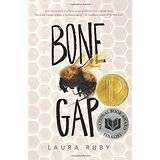
This one took me by surprise. I had put it on my Overdrive wishlist a while ago, so didn’t really remember what it was about. It starts out like a pretty straightforward missing-girl-in-a-small-town YA mystery, but goes in places I never expected. I don’t know what to say without giving things away, but I definitely recommend it to anyone looking for something a little bit different in Young Adult.
–Sarah Nicolas
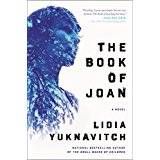
Joan is a mythical creature who is also extremely real and human in this masterful reimagining of a Joan of Arc savior fit for modern times. In a future world (not very far in the future, mind you), earth’s wealthiest humans have ascended – literally. They live on a space station that is running out of ways to sustain itself, and since sexual organs have shriveled and died, the ability to procreate is also off the table. In that world, a woman named Joan is believed to have been killed – branded an eco-terrorist by the ruling megalomaniac who watches over the space station, Joan was a freedom fighter for none other than Mother Earth. Told with Yuknavitch’s incredible imagination and attention to language, this book floored me.
–Ilana Masad
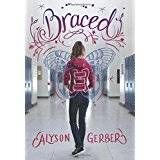
It’s about time we got a modern scoliosis story. (Sorry, Judy Blume. I love you and Deenie, but times have changed.) Rachel Brooks just started seventh grade and has to wear a back brace. As she figures out how to function with a big, awkward turtle shell, she also deals with normal teenage things like friends and boys and soccer and dances. And bullying. Her mom went through the same thing at her age — and had surgery for it — and the “You’re so lucky; I had it so much worse” grates on Rachel. The brace makes common things more difficult, but it also helps her deal with her problems head-on. Just because her torso is in a shell doesn’t mean the rest of her needs to be covered up. She stands up for herself and kicks ass on the soccer field. Braced brought back so many memories I didn’t know were still locked away in my brain about my time as a 13-year-old with new metal in her spine and a plaster brace to keep her safe. It’s the perfect portrayal of this twisty-turny time so many teenage girls go through.
— Ashley Holstrom
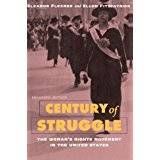
Oh my gosh, so much I didn’t know! Why is the suffrage movement not taught in U.S. History classes?! I picked this out to read because my new idea for a novel takes place in the later years of the suffrage movement, and I knew I needed to research the time period. While I was familiar with the Seneca Falls convention (notably, several people I’ve talked to about this book had never heard of it!), I was completely ignorant about the vast majority of suffrage history. So many awesome women, and so many horrifyingly misogynistic trials to overcome. Flexner does an awesome job at research. If you’re worried about inclusivity, Flexner does address black women’s contribution to women’s suffrage, and also the racism that occurred within the movement. This is a must-read for anyone interested in learning more about the women’s suffrage movement in the United States.
— Margaret Kingsbury
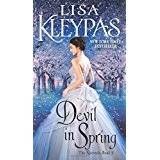
I wasn’t sure what to expect from this book. The previous installment in the series, Marrying Winterborne, made me feel like I was watching paint dry, and bringing back the descendants of one of Kleypas’ most memorable heroes (Sebastian from Devil in Winter) seemed like maybe she was grasping at straws. After an irritating opening scene, however, I was thrilled to realize Kleypas was back to form with this book. The true star of the story is Lady Pandora, a quirky board game inventor with no interest in marriage. Gabriel, her suitor, is a bit 2-dimensional, but he is swoony and he and Pandora have fantastic chemistry. Not to mention there are some truly delightful secondary characters, in particular Pandora’s footman/bodyguard, Dragon. I love Dragon!! Kleypas’ historical research is, as ever, top notch, and I appreciate that she populates her books with people of all classes, both men and women. If you’re looking for an escapist, romantic story you can sink your teeth into, Devil in Spring is it.
–Tasha Brandstatter
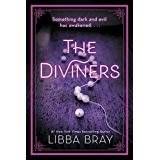
I picked this audiobook on a whim, but it turned out to be a delightful surprise! The story takes place in the mid 1920s and centers around seventeen-year-old Evie O’Neill, who has been exiled from her Ohio hometown and sent to live with her eccentric uncle in New York City. But what Evie doesn’t tell anyone is that she has a psychic gift – a gift that ultimately ended up causing major trouble for her in Ohio. Soon after Evie arrives in New York, however, a terrifying (and possibly supernatural) serial killer starts picking off people in a series of ritualistic murders. Evie believes that she might be able to use her special gift to help solve these murders, but doesn’t know how to tell her uncle. Even worse, what if he doesn’t believe her? This book satisfied a reading need I didn’t know I had – it’s a rich, multi-layered YA historical supernatural mystery with interesting, diverse characters and a serious creepy factor. Plus, the amount of historical detail in the story makes you feel like you’ve really been transported back to the Roaring ’20s. I can’t wait to start the sequel and find out what happens to the rest of the characters!
–Katie McLain
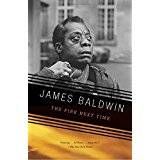
After seeing the documentary, I Am Not Your Negro, I knew I had to get my hands on Baldwin’s work. I began with this short book, composed of a letter to his nephew and a longer essay, that deals head-on with the “racial nightmare” of the United States (to use Baldwin’s own words). The author describes the suffocating Harlem of his youth, his disappointment with trying to find salvation through religion and his own conflicting feelings about Nation of Islam founder Elijah Muhammad. The book is vital, not because of its description of the Civil Rights era, but because Baldwin’s analysis of race relations can so easily be applied to the present. A sobering thought, indeed.
— Ines Bellina
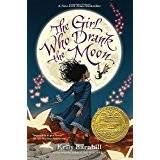
I’m not surprised this won the Newbery, because it is absolutely stunning. Told in a wonderfully mystical narrative, this book is sure to join the ranks of enduring middle grade classics. The story centers around a long held tradition in the Protectorate, that every year the youngest child must be sacrificed to appease the witch in the forest. But right away the reader finds out the the witch, named Xan, is actually kind and makes the yearly trek to the Protectorate to save the babies from dying alone. One day, Xan picks up a baby girl and instead of feeding her starlight she feeds her moonlight, which imbues the child with incredible powers. What follows is an intricate cast of characters that are all affected by Luna, the girl who drank the moon. I loved every word in this book, and I look forward to reading it again and again and again.
–Karina Glaser
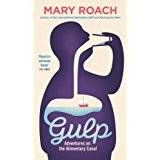
Did you know that the human infant enters the world without information on what is edible and what is not, and until they are around the age of two, you can get them to eat almost anything? Or that saliva could be used to pretreat food stains because of the enzymes it contains (the same enzymes are artificially manufactured for laundry detergents)? Or that one of the reasons we like crunchy foods might be because we have a destructive nature and derive pleasure from destroying things?
Mary Roach is a popular science writer, and her books are accessible and hilarious. Gulp is about food, eating, and the human body: the journey food goes from the moment it passes our lips to the moment it exits our bodies. An interesting and informative book that had me laughing out loud as I read. Don’t skip the footnotes.
— Jen Sherman
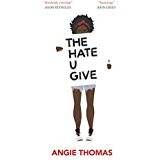
Hearing about the book hitting #1 on the NYT bestseller list was a pretty darn good reminder to check it out. I read it over the span of a few days, and had a hard time putting it down. The Hate U Give handles quite a few issues with nuance and incredible storytelling – the one that’s at the forefront being, of course, police brutality and Black Lives Matter. Now that I’ve finished the book, I want to get down to reading reviews and discussions of it – there’s plot developments that I’m definitely curious about in regards to people’s thoughts and reactions. And I can’t wait for the spin-off sequel!
— Jessica Yang
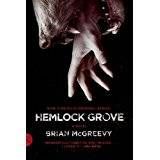
If your index finger and your middle finger are the same length, you’re probably a werewolf. Hemlock Grove is a town full of secrets. Someone-or something-has been murdering young girls. Peter thinks it’s Roman. Roman thinks it’s Peter. An unlikely friendship between a vampire and a werewolf draws all kinds of negative attention in a small town. You’d better stick to your curfew in this place, because there’s a high likelihood of being devoured.
McGreevy’s characterizations and luminescent sentences are like something out of a dream world. This is a gorgeous literary horror novel with an excellent sense of humor. You may be familiar with the Netflix series of the same name. Turns out McGreevy wrote the TV version as well, and it’s deliciously close to the novel. I highly recommend reading the book and then binging on the TV show. Just as long as you’re not binging on human flesh.
— Jan Rosenberg
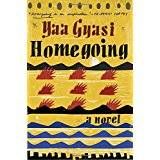
This multigenerational epic has already gotten lots of attention, and it deserves every bit of it. Gyasi’s debut novel begins with two half-sisters in 18th-century Ghana, strangers to each other. Effia marries a white man, and Esi is enslaved and taken to America. The novel follows the children of these two women through the generations, alternating between Africa and America. As we meet each new descendent, we see how the legacy of slavery plays out across history, both for the enslaved and for those complicit in the slave trade. Each chapter reads like a single short story, but the forward momentum across time gives the book a novelistic feeling. I adored this book, finding it illuminating, heart-breaking, and beautiful to read. I can’t recommend it highly enough.
— Teresa Preston
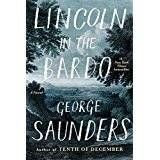
What a weird book! I’ve seen others describing it by saying that Saunders has essentially invented a new form and I don’t think that’s incorrect. The story is essentially that of a group of . . . ghosts? Non-alive people? Including President Lincoln’s recently deceased Willie? Hanging out in a cemetery basically in purgatory (bardo) and sort of talking to each other? Every sentence I want to write about this book ends in a question mark because reading it was such a weird experience. A few pages into it, I kept thinking, “Who are these people? What is going on?” because it’s just dialogue with the name of the person talking written after what they were saying but who are these people and also what is going on? And then I got to the chapters that were short excerpt after short excerpt of actual news reports, biographies, etc. from the time in which the story took place? All I can say is that by the time I was 50 pages in I’d stopped thinking, “What is going on?!” and just accepted that I had no choice but to sit back and let this book do what it was going to do to me.
— Tracy Shapley
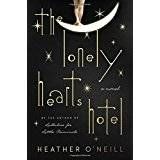
O’Neill has created a fantastical feeling in The Lonely Hearts Hotel that combined with the imaginative writing–and Whelan’s narration—made me feel as if a vintage movie was playing in my brain. It was all so vivid I wanted to reach my hand out and run away with Rose–or join the circus. It was so beautifully written it cushioned the heartbreak of Rose and Pierrot’s lives: two children–who are quirky and gifted and creative and in love– growing up in a Montreal Orphanage in early 1900s and their subsequent teen and young adult lives. This will certainly be one of the best novels of 2017.
–Jamie Canaves
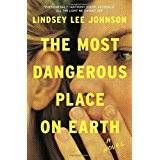
This was my Book of the Month pick a while back, and it was a great one! It was an exploration of the butterfly effect in a high school context — the eponymous dangerous place — and so insightful as to the minds, emotions, and motivations of teenagers. The voice, subtly different for each character whose story it explored, was a joy to read. And it made me supremely glad I’m not at high school anymore.
— Claire Handscombe
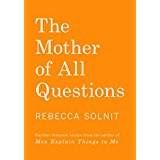
This was my first experience reading Rebecca Solnit. I was deeply impressed with the lyricism of her writing and the depth of her thinking. The Mother of All Questions is a collection of twelve feminist essays covering topics as diverse as motherhood, anthropology, literature, film, and sexual assault. While there is some overlap between essays, I generally found this collection to be insightful and thought-provoking.
— Kate Scott
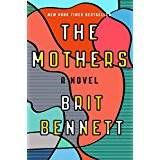
I don’t even know what to say about this book. It made me feel all the things. It’s about three people—Nadia, Luke, and Aubrey—but mostly Nadia. It’s about how our choices affect us, and how our secrets can define us if we let them. It’s about growing up in a tight knit community, and the pressures and the judgements that can go along with that. It’s about how grief and pain mess us up and what can happen when we try to leave it behind. The Mothers is my favourite kind of book—a story about people, about life. It’s so beautiful and poignant in its exploration of humanity in the microcosm that are these characters. I absolutely devoured this book.
–Beth O’Brien
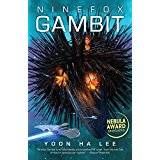
Fans of The Three-Body Problem, old-fashioned military sci-fi, and/or books about raging high-level conspiracies, this is your jam. Kel Charis is a disgraced military captain who is given the opportunity to redeem herself by recapturing a fortress over-run by mathematical heretics. But to do so, she has to attach her consciousness to a mass-murdering psychopath who is also a little undead, maybe? Add some cute robot servants and heart-pounding space battles and you’ve got yourself a good time. Unless you’re dying in the space battles.
–Amanda Nelson
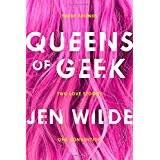
Swoon is right. First of all, this whole book takes place at a convention! The protagonists are diverse (one is a fat, geeky, anxious aspie girl and one is a Chinese-Australian bisexual girl) and they both have adorable love stories. There’s a romance between two female vloggers who are both women of colour and both fans of each other’s! Oh, and it’s funny and geeky and heartwarming. This was just lovely.
–Danika Ellis
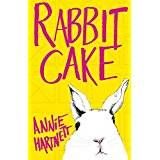
Hartnett’s novel is kind of like when a lone cloud drifts in front of the sun for a few minutes during a day at the beach. The atmosphere is warm and vibrant, but there’s a looming reminder of how quickly our fragile environments can be overcast. Delight and dolefulness collide in Rabbit Cake, and it leaves one overwhelmed by the simple beauty of the novel’s spectrum of emotion. Elvis Babbitt, a ten-year-old girl who’s just lost her mother due to the hazards of sleepwalking, is likely the most memorable narrator I’ve encountered in the past year. The dysfunction of Elvis’s family following her mother’s death is at times whimsical, tragic, and untamed, but what makes Hartnett’s novel a standout is the way it finds absurdity in the quotidian. Rabbit Cake examines how families – whether human or zoo animal – function in the face of chaos, cohabitate in moments both mundane and extraordinary, and change course in times of trauma.
-Aram Mrjoian
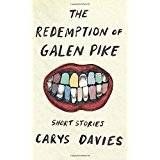
This is a slim collection of stories but oh it be mighty! Each story is a gem, a wildly imaginative look at the hardships and beauty of life. Davies infuses each interesting tale with raw emotion and observations as her characters grapple with the unpredictability of the world. A man shares a story with Queen Victoria; a teenage girl runs away from home; a woman has a visit from her new neighbor; a famous writer gets a new bonnet. No matter what the tale, this collection is filled with unique visions of loss and pain, but also filled with surprises and humor. My favorite story is the title story, about a kindly Quaker woman who visits a doomed prisoner in a Colorado jail. I cheered at the end of that story, but I sighed at the end of the book, for it was over much too soon. Can’t wait to see what Davies does next.
— Liberty Hardy
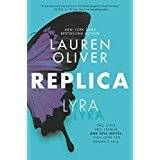
Picked this up as part of an exploration of alternative POV books for reference as I write a two-sister POV project of my own, and it was lovely and inspiring. It opens in an intense sci-fi world, with the story of Lyra, a replica. Then it switches to the perspective of everyday teen Gemma, and you realize that sci-fi world is this world. Definitely recommend a print copy of this one, because you read each girl’s story from different ends of the book, and you can go right through one or the other, or alternate chapters between the two.
–Emily Wenstrom
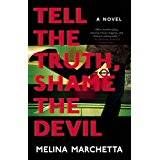
I moved earlier this month and didn’t have the brain capacity for anything other than a plot-driven mystery novel. This book is exactly the kind of page-turner that’s perfect for when you want to read but don’t want to have to meditate on the meaninglessness of life (lookin’ at you, literary fiction). This book had so much that I just adore: teenagers with real, nuanced inner lives; diversity in the characters (in a lot of ways); no guns; complicated families with secrets and histories. I listened to it on audio and it felt like having a British friend tell me about his (admittedly, really terrible) day, so that was a bonus too.
–Ashley Bowen-Murphy
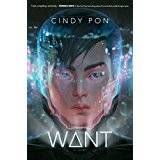
I’m sorry, Book Rioters. But you are going to be hearing from me a lot when it comes to this book. The ARC Gods were kind enough to deliver me a copy of Cindy Pon’s latest YA novel, and my goodness, is it ever a treat. Set in a future Taipei where pollution leaves a majority of the population dying incredibly young, while the wealthy elite live and flourish in environmental suits, it’s the dream of every reader who has a Blade Runner sized hole in their heart. Readers meet Jason, a teen who infiltrates the affluent high society to change things from the inside… as it’s the large corporations who are profiting off of the pollution while producing the suits only the rich can afford. It’s an absolutely thrilling sci-fi story that’s Red Rising meets Blade Runner, set in a vividly imagined world of secrets, betrayal, and stunning, futuristic technology. Watch out for this book.
— Eric Smith
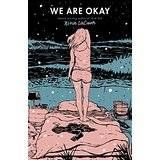
This nonlinear story of family, friendship, and grief is sparse and beautifully paced. After a tragedy, Marin leaves for college across the country weeks early and ceases contact with everyone from her old life. Now, her best friend is flying from California to New York to see her during winter break. The unravelling information about the nature of their friendship and the hardships Marin’s endured kept me enraptured. Reading this book was like a workout for my emotions.
–Alison Doherty

This book had been on my radar since before it published in October of last year. A collection of personal essays that tackle issues of race and identity, it gave me a glimpse of racism as it is experienced by marginalized populations, in much the same way Claudia Rankine’s Citizen did. Except that, where Citizen was lyrical, a breathtaking work of prose poetry, Robinson’s book is knock-you-on-your-ass hysterical. Which makes sense, considering that Robinson is a stand-up comic with a resume that includes Late Night With Seth Meyers, Broad City, and her WNYC podcast 2 Dope Queens. I feel grateful that she has so much out there that I can still explore.
— Steph Auteri














